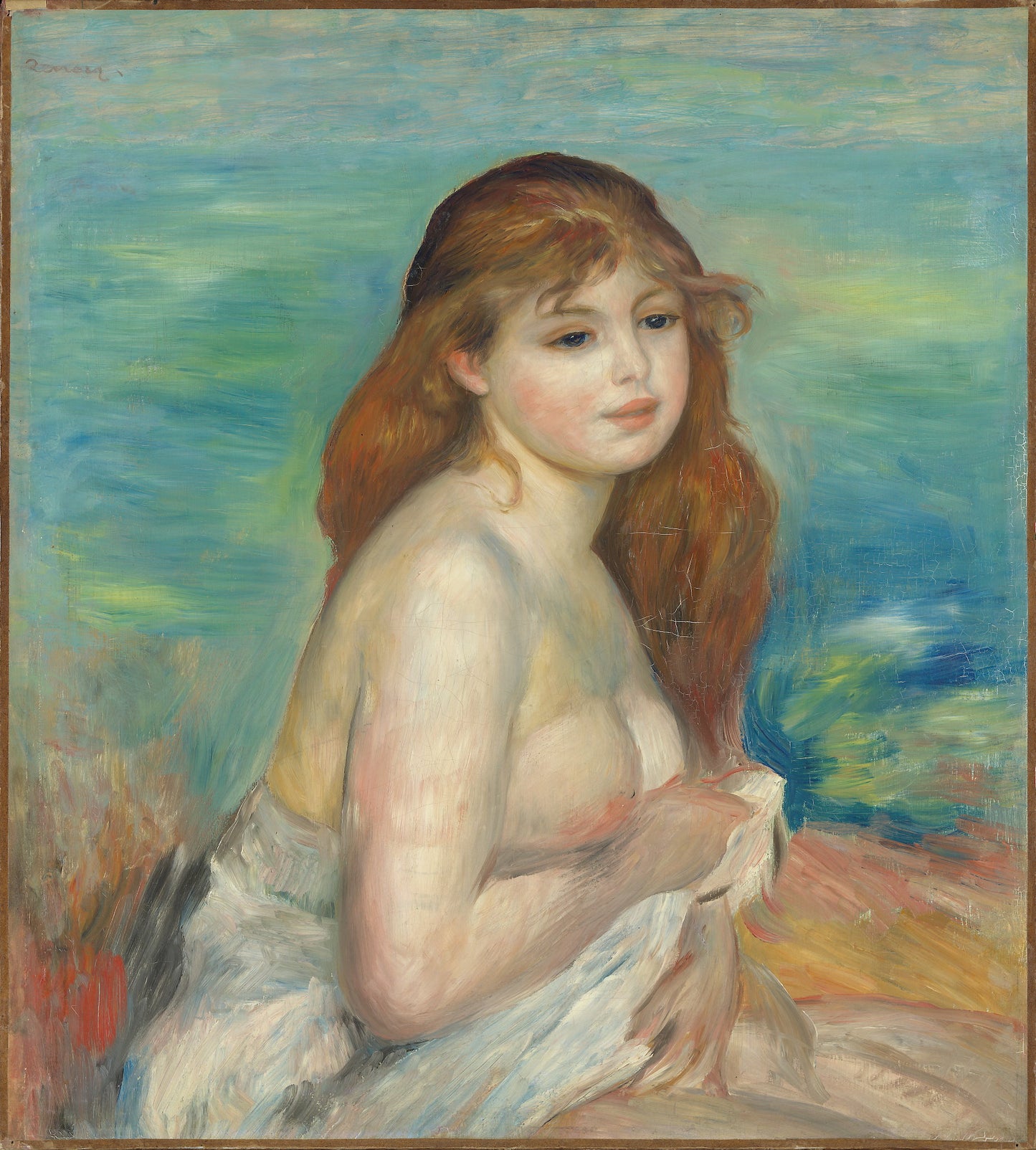Auguste Renoir
After the bath
After the bath
Couldn't load pickup availability
About the original:
He sought the beauty of line and form in a harmonious, sensual whole, as it could be expressed in the bodies of young women. After the Bath is a typical example of this new orientation in Renoir's art. Some regarded this turn towards classical ideals as sugar-laden kitsch, while others found in the "late" Renoir valuable impulses for their own work. Both Matisse and Picasso (in the 1920s) learned a lot from Renoir. The young woman has, like a modern Aphrodite, risen from the blue-green sea of the background. Drawn in a simple and classic triangular composition, she sits and dries her still damp body.
The picture came to Scandinavia in 1914, first to an exhibition in Copenhagen, before it was transported to "The French Exhibition" in the National Gallery in the summer of 1914. Due to the outbreak of war, it hung in the museum, but still belonged to a French art dealer. Thanks to a generous gift of money from the Norwegian shipowner Tryggve Sagen, Etter badet was given a permanent place in the National Gallery in 1917.
Text: Nils Messel
From "Highlights. Art from Antiquity to 1945", The National Museum 2014, ISBN 978-82-8154-084-2
Date: (1883)
Other titles: Petite baigneuse (FRA)
Designation: Painting
Material and technique: Oil on canvas
Technique: Oil
Material: Canvas
Dimensions: 60 x 54 cm
Subject: Visual arts
Classification: 532 - Visual arts
Motif type: Act
Acquisition: Gift from shipowner Tryggve Sagen 1917
Inventory no.: NG.M.01166
Part of exhibition: Art 3. Works from the collection 1814-1950, 2007 - 2011
The dance of life. The collection from antiquity to 1950, 2011 - 2019
Registration level: Single object
Owner and collection: The National Museum of Art, Architecture and Design, Visual Art Collections
Photo: Børre Høstland/Jarre, Anne Hansteen

Utforsk våre samlinger
-

Photograph
To ensure that our photo prints are of the highest quality, we...






